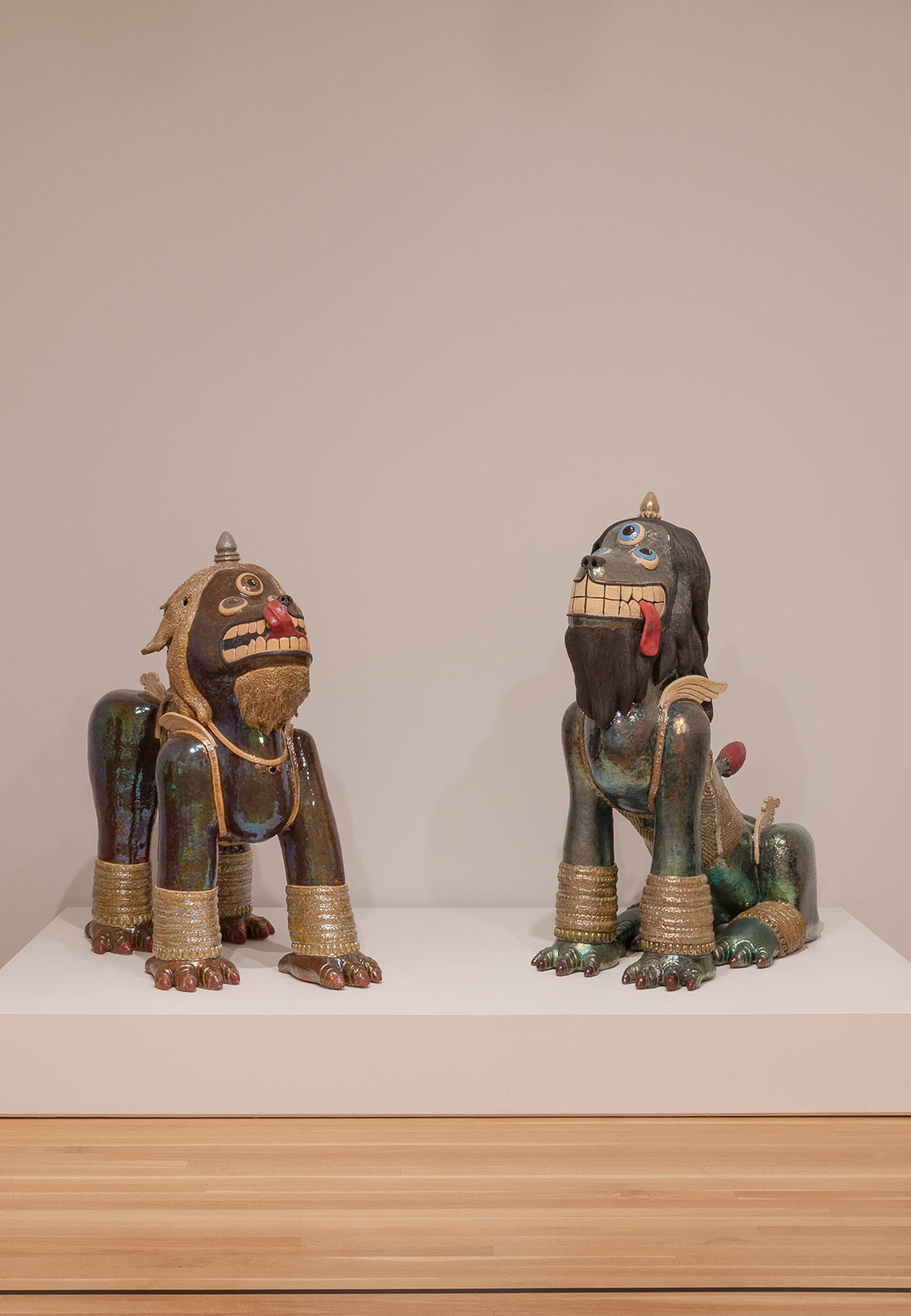Wrightwood 659 in Chicago showcases its commitment to Asian art with Reimagine: Himalayan Art Now, an exhibition pairing contemporary art from the Himalayas and its diaspora with traditional Buddhist and Hindu objects. Organised by the Rubin Museum of Art, the show on view from November 8, 2024 – February 15, 2025, offers fresh perspectives on both contemporary global art and sacred Himalayan traditions. Presented by Halsted A&A Foundation, Reimagine features works by 28 living artists from Tibet, Nepal, Bhutan and surrounding regions now living worldwide.
The art exhibition spans diverse media, including painting, sculpture, sound, video and installation , with 18 pieces specially commissioned by the Rubin. Each contemporary work is paired with a traditional religious object, such as a gilded Garuda figure and Buddhist prayer beads drawn from Rubin’s extensive Himalayan art collection. The exhibition is presented by Halsted A&A Foundation at Wrightwood 659.
Reimagine: Himalayan Art Now debuted earlier this year at the Rubin Museum of Art in New York as its final exhibition before the museum transitions to a global model in October. The exhibition was organised by Michelle Bennett Simorella, director of Curatorial Administration & Collections at the Rubin, with guest curators Roshan Mishra, director of Taragaon Next in Kathmandu, Nepal, and Tsewang Lhamo, creative director of Yakpo Collective, a Queens-based nonprofit supporting contemporary Tibetan art. The presentation at Wrightwood 659 is curated by Simorella.
According to Simorella, “The artists in ‘Reimagine’ engage with symbols and stories from Himalayan cultural heritage, reframing or reinterpreting them to address themes like displacement, migration, technology and identity. This exhibition underscores the urgency of contemporary art in the Himalayas and its diaspora, highlighting how artists resist cultural erasure.”
Upon entering, visitors are greeted by hundreds of cascading red, green, blue, white and yellow prayer flags, with emerging horses stretching from the third floor to the atrium. The Windhorse, created for the exhibition by Bhutanese artist Asha Kama Wangdi and the VAST (Voluntary Artists Studio) collective, channels a pre-Buddhist myth of a creature combining the wind’s speed and the horse’s strength to carry prayers from earth to the heavenly realm.
As the exhibition continues across the second, third and fourth floors, other works explore Buddhist narratives and teachings on human existence. One piece is Binary Wheel, a video installation by LuYang, accompanied by four backlit photographs of the artist performing as avatars locked in a dance, unable to escape the Wheel of Life. New World, a hyper-realistic painting by Kathmandu-based artist Roshan Pradhan, reimagines the union of male and female in Buddhist art as an embrace between a robot and a human woman, surrounded by robotic bees and human babies.
In another installation, Brooklyn-based artist Chitra Ganesh places a gilded bronze figure of the bodhisattva Maitreya in front of a digital animation loop, flashing news clips of war, protest and calamities. Maitreya, the Buddha of the future, is believed to bring a new age when the world has lost its way. Meanwhile, artist Charwei TSAI, who works in Taipei and Paris, combines thousands of mirrors, diamonds and handblown glass to illustrate chaos and order. Each glass shape, womb-like and blessed with a mantra, symbolises the interconnectedness of all things.
Humour plays a key role for several featured artists, including Nepal-born Shushank Srestha. He is represented by a large glazed ceramic figure of the Hindu god Ganesha, where the god’s traditional vehicle, the rat, is reimagined as a snarling Uber vehicle on wheels, fangs bared and wearing an AirPod. Gender equality and fluidity are central themes in a video commission by Tenzin Mingyur Paldron. Drawing from their own experience of coming out as transgender, Paldron explores how Tibetan sacred figures, such as Manjushri, the bodhisattva of wisdom, embody gender fluidity.
Nepalese artist Prithvi Shrestha reflects on the Buddhist concept of attachment in a personal painting of himself and his wife in a dream-like reverie surrounded by floating pink blossoms. A tiny Shiva and Parvati form rests on his wife’s sweeping black hair. Nearby, a 13th-century gilded figure from Nepal depicts the same reclining deities.
Memory and its preservation are central themes for many artists, including New York-based Losel Yauch. Her riderless cavalry of silk-clad horses reflects her grandfather’s stories of protecting freedom in Tibet. The theme of exile, both voluntary and involuntary, also inspires works by artists like Sonam Dolma Brauen, a Tibetan-born, Switzerland -based artist. Her installation features a stunning 13th-century copper and stone-studded stupa from Tibet, surrounded by circular rows of small white clay funerary mounds (tsatsas). The tsatsas were hand-cast from a mould her family rescued during their escape from Tibet in the 1950s. Traditionally made from clay and the deceased's ashes, the tsatsas in the exhibition were cast at the Rubin Museum and through workshops in the surrounding community. At the artist’s request, each was filled with handwritten wishes by the maker.






 Sign in with email
Sign in with email










What do you think?